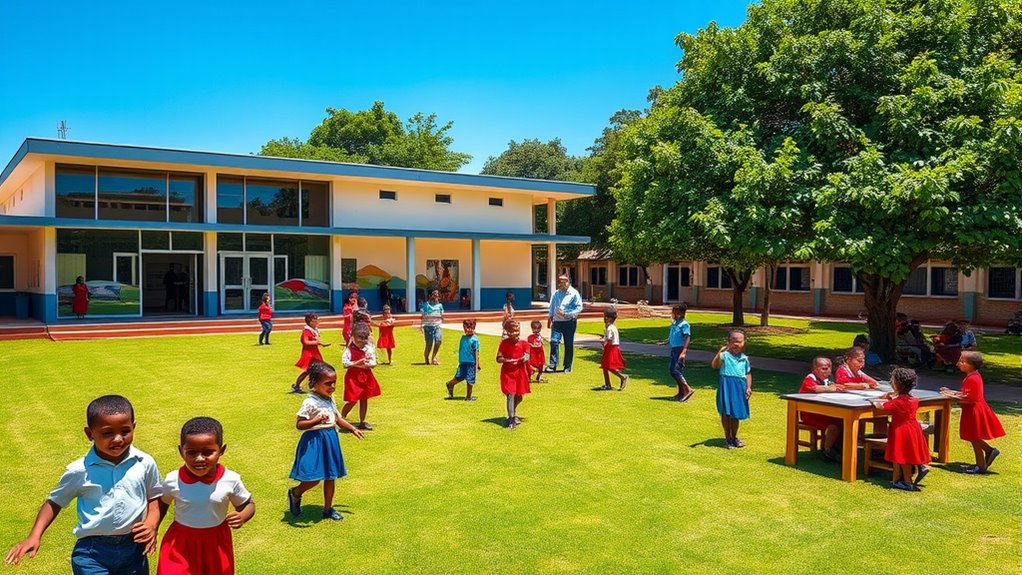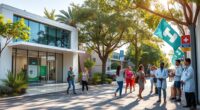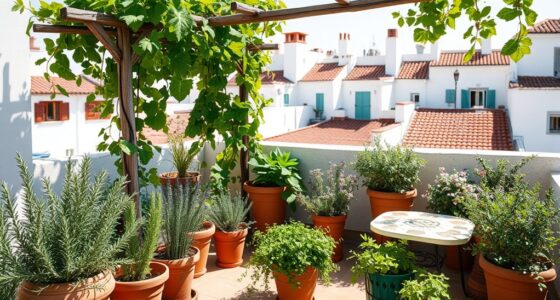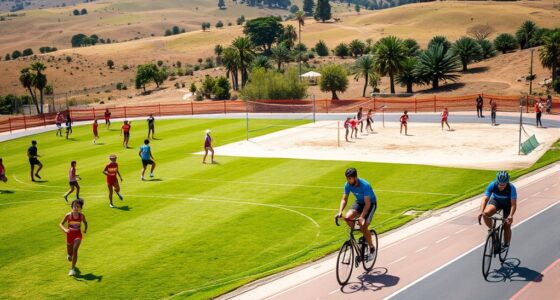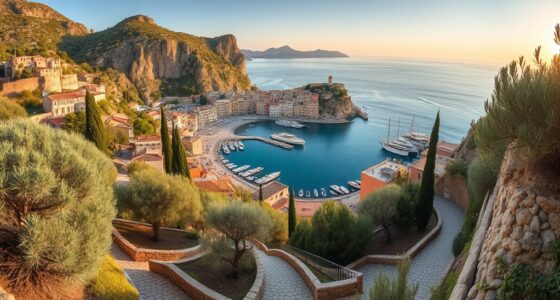In Ittiri, you’ll find a range of public schools offering free education from primary through secondary levels, following Italy’s national curriculum with regional and cultural influences. Classes are manageable in size, and schools emphasize bilingual programs in Italian and English, often including extracurricular activities. While there are challenges like resource disparities and rural access issues, ongoing initiatives aim to improve educational equity. Explore further to learn how local initiatives shape the future of education in Ittiri.
Key Takeaways
- Public schools in Ittiri follow Italy’s national curriculum, offering free education for ages 6-11 with small class sizes.
- The school year runs from September to June, with a focus on bilingual education in Italian and English.
- Schools integrate regional culture through music, festivals, and local history to promote regional identity.
- Challenges include socioeconomic disparities, limited access to resources, and infrastructure issues affecting education quality.
- Opportunities involve STEM programs, digital learning tools, and support initiatives to enhance educational equity.
Overview of the Education System in Ittiri and Sardinia
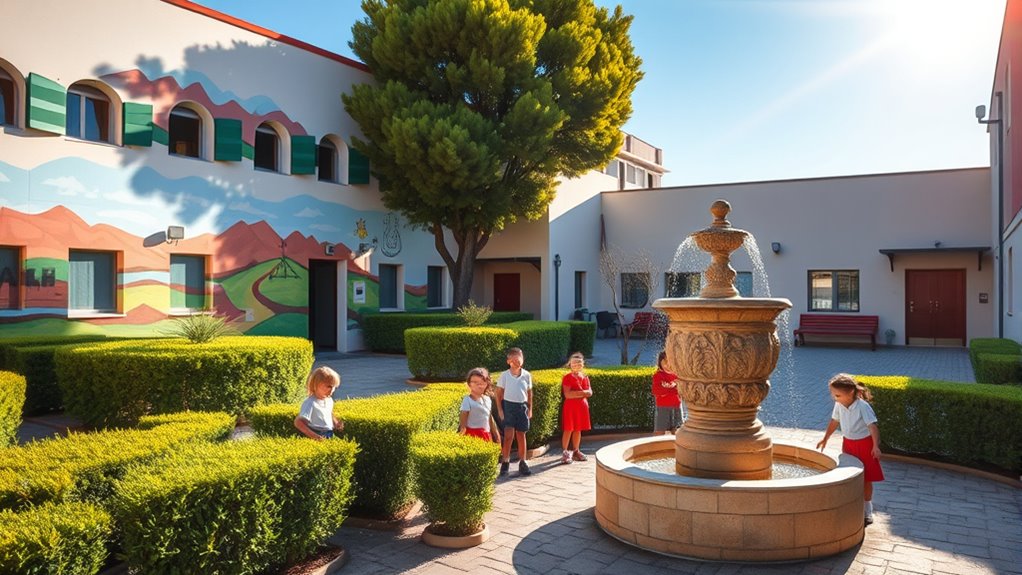
In Ittiri, as in the rest of Sardinia, the education system follows Italy’s national structure, comprising five main stages: nursery, primary, lower secondary, upper secondary, and university. You’ll find that compulsory education lasts 10 years, from ages 6 to 16, covering primary and lower secondary levels. Nursery school, starting at age 3, isn’t mandatory but offers early learning. Primary school spans five years, teaching core subjects like Italian, English, math, science, history, and arts. Lower secondary lasts three years, adding technology and a second foreign language, such as Spanish or French. Education is free and guaranteed by the Italian Constitution, ensuring access for all children. State exams regulate progression, graduation, and professional qualifications, supporting a structured and inclusive system across Sardinia. Regional disparities in educational resources and infrastructure remain a challenge, impacting some localities more than others. Additionally, educational quality can vary depending on regional funding and local initiatives.
Types of Schools and Educational Institutions in Ittiri

Public schools in Ittiri follow Italy’s national education system, providing free and accessible education for children aged 6 to 11. You’ll find classes with 14 to 20 students, creating a manageable learning environment. The curriculum covers essential subjects like Italian, mathematics, English, history, science, and music. The school year runs from September to June, with holidays including a long summer break. School days typically last 24 to 40 hours weekly, Monday through Friday, sometimes including Saturday, with about an hour for lunch. Besides public schools, there’s Sardinia International School nearby, offering bilingual programs in Italian and English, with a full schedule and locally prepared meals. Upper secondary options include liceo, technical institutes, and vocational schools preparing students for careers or further studies. Educational standards ensure a consistent and quality learning experience across the region.
Curriculum and Learning Focus in Local Schools

How do schools in Ittiri shape their curriculum to balance local traditions with global standards? They blend the Italian national curriculum with international elements, offering multilingual education that emphasizes both Italian and English. Sardinia International School, for example, teaches most subjects in English, with Italian language and literature as key components. You’ll find a focus on fostering bilingual fluency from an early age, with instruction delivered by native English speakers and Italian specialists. The curriculum also integrates Sardinian culture through music, dance, and festivals, strengthening students’ regional identity. The integration of regional language and customs helps preserve Sardinian heritage within a modern educational framework. Incorporating cultural preservation initiatives, schools actively promote local traditions alongside global academic goals. Key aspects include:
- Combining academic subjects with extracurricular activities like sports and arts
- Reinforcing Italian and English language skills while respecting Sardinian traditions
- Promoting cultural awareness through local history and folklore programs
This approach creates a well-rounded, culturally rooted education.
Challenges and Initiatives for Educational Equity in Ittiri
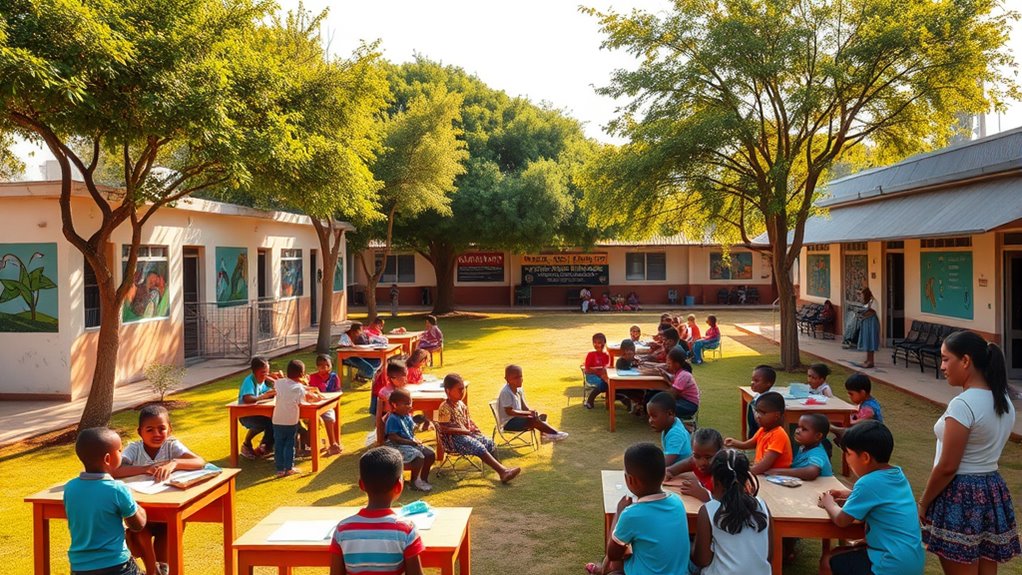
What are the main obstacles to achieving educational equity in Ittiri? Socioeconomic barriers substantially limit students’ access to resources, extracurricular activities, and consistent attendance, especially in low-income families. Limited household educational support and transportation issues in rural areas further hinder student retention and participation. Unequal access to technology affects remote learning, widening disparities. Additionally, linguistic and cultural minorities, such as Sardinian speakers, face challenges in inclusion, despite multilingual programs and cultural awareness efforts. Infrastructure problems in rural schools, like outdated facilities and scarce specialized staff, restrict quality education. Funding constraints also limit technological upgrades. Community partnerships and national policies aim to address these issues, promoting inclusive education, resource sharing, and targeted support, but ongoing efforts are needed to overcome persistent inequities in Ittiri. The lack of adequate teacher training programs further hampers efforts to implement inclusive teaching practices effectively. Moreover, the increasing integration of AI and automation in education systems can offer innovative solutions for personalized learning and resource management, helping to bridge some of these gaps.
Opportunities for Students and Future Educational Pathways
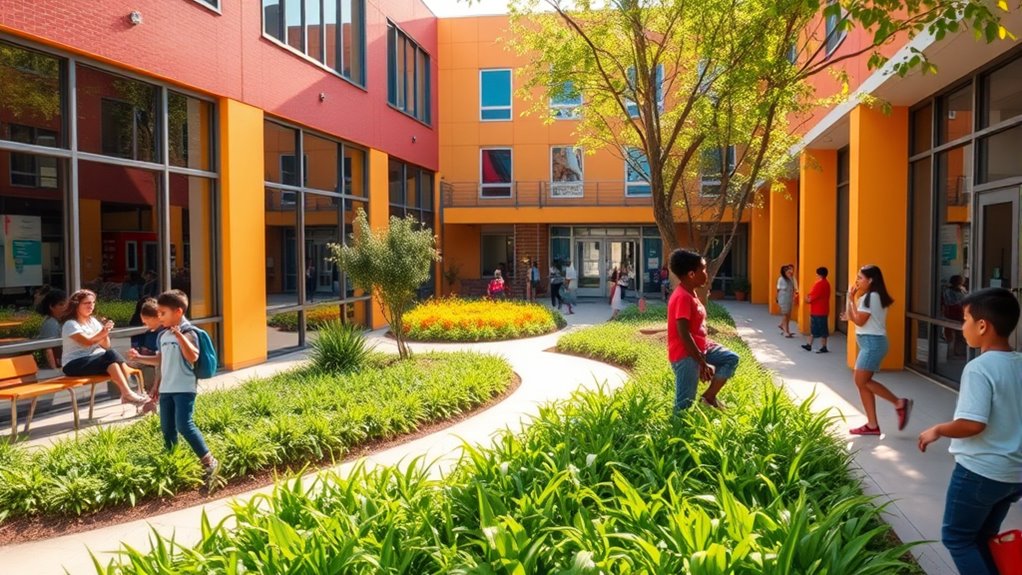
Recent initiatives in Ittiri are opening new doors for students to explore future educational pathways and develop their skills. The introduction of individualized guidance and digital portfolios helps you identify your strengths, interests, and skills, guiding you toward personalized paths. These tools aim to reduce early school leaving and boost your chances of enrolling in higher education. Additionally, STEM education and gender inclusion initiatives provide you with essential skills in science, technology, engineering, and math, encouraging engagement and closing gender gaps. You can choose from various upper secondary tracks—scientific, artistic, or technical—that prepare you for university or vocational careers. With free access, scholarships, and support programs, Ittiri ensures you have the resources needed to build a bright future. Creating a supportive environment is also crucial for fostering student success and engagement.
Frequently Asked Questions
What Extracurricular Activities Are Available for Students in Ittiri Schools?
You’ll find a wide range of extracurricular activities available in Ittiri schools. You can participate in sports like football, basketball, tennis, or volleyball on well-maintained courts. Creative programs include visual arts and music, giving you chances to explore painting, drawing, or instruments. Additionally, you can join chess clubs, attend workshops, or engage in community events. These activities help you develop skills, make friends, and enjoy a balanced, enriching school experience.
How Do Ittiri Schools Incorporate Local Sardinian Culture Into Education?
You see, Ittiri schools actively incorporate Sardinian culture by teaching the Sardinian language and including traditional stories in lessons. You participate in music, dance, and local festivals that celebrate Sardinian holidays. You also engage in workshops with artisans, learn about local history through excursions, and enjoy meals made with regional ingredients. This hands-on approach helps you connect deeply with Ittiri’s rich heritage and keeps traditions alive.
What Support Services Are Offered for Students With Special Educational Needs?
You’ll find that support services for students with special educational needs are thorough. Schools develop tailored learning plans, including IEPs, and integrate therapies like speech and occupational support. They provide assistive technologies and accessible infrastructure. Psychologists are available for assessment and counseling, and you can access family workshops. Schools also collaborate with external organizations for additional care, ensuring every student gets the personalized support they need to succeed and feel included.
How Do Schools in Ittiri Promote Digital Literacy Among Students?
Like a gardener tending to every plant, you help students grow digitally by integrating national policies like PNSD into daily lessons. You use digital tools, e-learning platforms, and safe social media programs to enhance their skills. Continuous teacher training guarantees you’re equipped to teach media literacy responsibly. By fostering an inclusive environment and promoting responsible online behavior, you make digital literacy accessible and engaging for all students.
Are There Language Immersion Programs for Minority or Regional Languages?
You won’t find many formal immersion programs for regional or minority languages like Sardinian in Ittiri. While Sardinian is recognized and preserved culturally, schools mainly teach Italian with some regional language content rather than full immersion. You might encounter cultural activities or elective courses, but dedicated immersion programs are rare or absent. If you’re interested in immersion, you may need to look outside local schools or participate in community-led initiatives.
Conclusion
In Ittiri, education opens doors to endless opportunities, yet challenges remain like shadows in a bright landscape. You can embrace the rich learning environment and build your future, but remember, progress requires effort and resilience. Just as tradition and innovation coexist here, your journey blends past lessons with future ambitions. Ultimately, your educational path is a bridge—connecting where you are now to where you want to be, shaping both your life and the community’s future.
